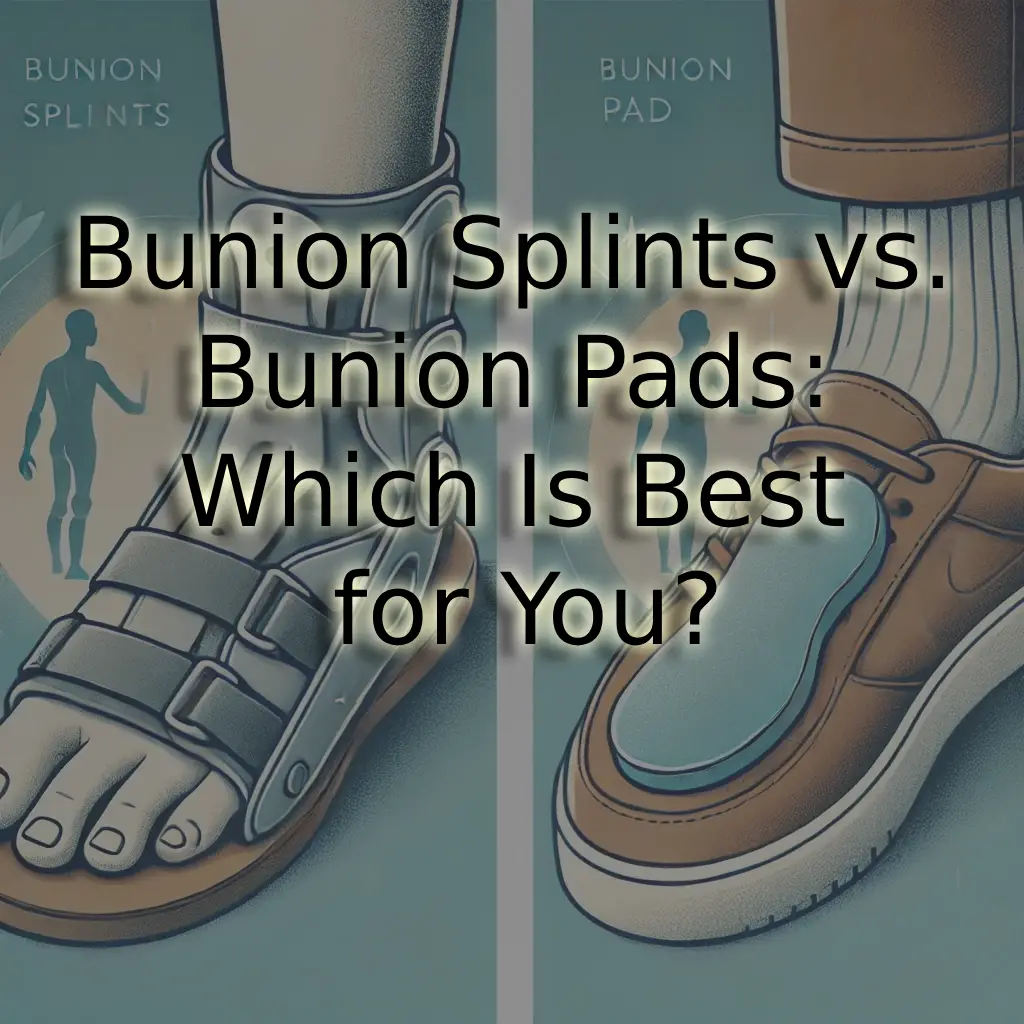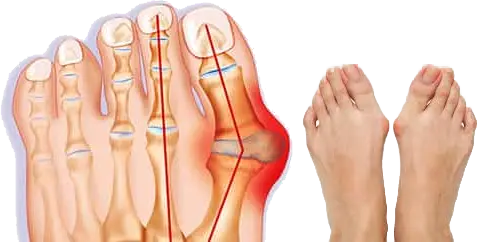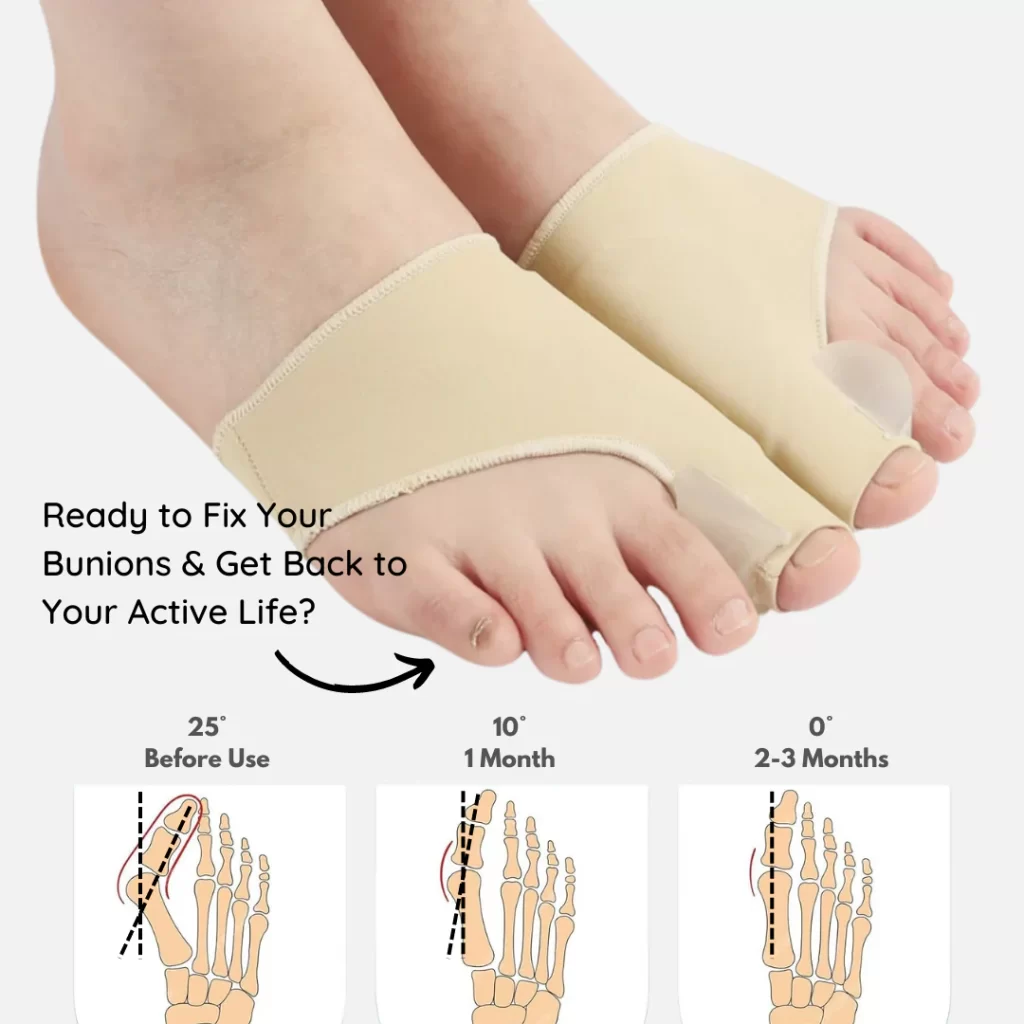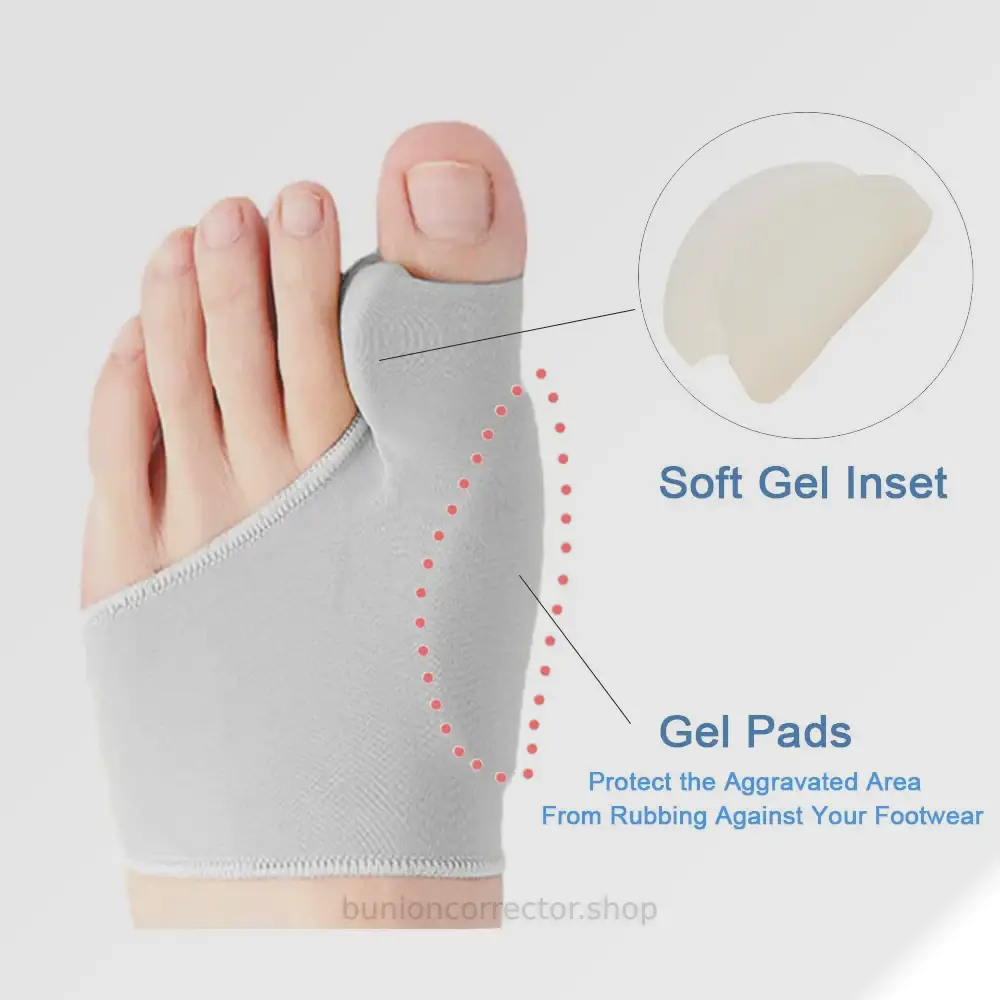When dealing with bunions, the pain and discomfort can feel overwhelming. Many people seek non-surgical solutions to ease their symptoms, and two popular options are bunion splints and bunion pads. But which one should you use? Let’s dive into what each of these tools offers, how they work, and which might be the better choice for you depending on your situation.

What Are Bunions?
Before we get into the specifics of bunion splints and bunion pads, it’s important to understand what a bunion is. A bunion is a bony bump that forms on the joint at the base of your big toe. Over time, this bump grows and can cause the big toe to lean toward the other toes, often resulting in pain, swelling, and discomfort while walking or wearing shoes. Bunions are more than just a cosmetic issue—they can significantly affect your daily life and mobility.
Common Causes of Bunions:
- Wearing tight or ill-fitting shoes
- Genetics (if your family has a history of bunions)
- Foot injuries or deformities
- Arthritis, particularly rheumatoid arthritis
Understanding the root cause of your bunion is key to choosing the right treatment, which brings us to bunion splints and bunion pads.

What Are Bunion Splints?
Definition
Bunion splints are devices that are worn to gently realign the position of your big toe. They typically consist of a brace that wraps around the foot and toe, applying gentle pressure to push the big toe back into a more natural alignment. They’re usually worn at night or during periods of rest, and are designed to gradually reduce the misalignment over time.
How Do Bunion Splints Work?
Bunion splints work by applying a consistent, gentle force to the affected toe joint. By doing this, they aim to realign the toe and reduce the bump caused by the bunion. While they don’t “cure” bunions, they can help to ease discomfort and potentially slow the progression of the bunion.
Benefits of Bunion Splints:
- Alignment Correction: One of the primary benefits of bunion splints is their ability to help correct the position of the big toe. This can relieve pressure on the other toes and reduce the overall discomfort.
- Pain Relief: By reducing the strain on the bunion and surrounding areas, splints can provide relief from persistent bunion pain, especially during rest.
- Non-Invasive: Splints offer a non-surgical option for those looking to manage their bunion symptoms.
- Custom Fit Options: Many bunion splints are adjustable, allowing you to find a fit that’s comfortable and effective for your foot shape.
Drawbacks of Bunion Splints:
- Not for All-Day Use: Bunion splints are generally designed for nighttime wear. Wearing them during the day, especially in shoes, can be uncomfortable and impractical.
- Slow Progress: It can take several months of consistent use to see noticeable improvements, and for some, the bunion may still continue to progress despite using a splint.
- Limited Effectiveness for Severe Cases: While splints can help mild to moderate bunions, they may not be as effective for severe bunion cases that might require surgery.

What Are Bunion Pads?
Definition
Bunion pads are soft, cushioned pads that are placed over the bunion to relieve pressure and reduce friction between the bunion and the inside of your shoe. Unlike splints, bunion pads don’t try to realign the big toe but focus on providing immediate relief from discomfort, particularly when walking or wearing shoes.
How Do Bunion Pads Work?
Bunion pads work by creating a soft barrier between the bunion and the shoe, preventing irritation and rubbing. They come in a variety of shapes and materials, from gel pads to foam, and are typically adhesive so they stay in place throughout the day.
Benefits of Bunion Pads:
- Instant Relief: Bunion pads offer immediate comfort by reducing friction between your shoe and the bunion.
- Ease of Use: Simply place the pad over the bunion and you’re ready to go. There’s no adjustment or special fitting needed.
- Discreet: Pads are small and can easily be worn throughout the day, even with snug shoes, without being noticeable.
- Affordable: Compared to other bunion treatments, bunion pads are relatively inexpensive, making them a budget-friendly option for quick relief.
Drawbacks of Bunion Pads:
- Temporary Relief: Bunion pads only provide a temporary solution. They don’t address the underlying issue or realign the toe, meaning the bunion will still progress over time.
- Replacement Required: Pads wear out over time, especially if you’re on your feet a lot. This means you’ll need to replace them regularly.
- Limited Pain Relief: While pads reduce friction, they may not be enough to relieve significant bunion pain, especially for those with more severe cases.
Bunion Splints vs. Bunion Pads: Which Should You Choose?
Now that we’ve covered what both bunion splints and bunion pads are and how they work, let’s explore which option might be best for you.
When to Use Bunion Splints:
- If You’re Looking to Correct Alignment: If your main goal is to prevent your bunion from getting worse or to improve the alignment of your toe, a bunion splint is likely the better option.
- For Nighttime Relief: Splints are best used at night when your foot isn’t in a shoe. This allows the splint to work without being restricted by the confines of your footwear.
- For Mild to Moderate Bunions: If your bunion is in the early stages, a splint may be able to help slow down or even stop its progression.
When to Use Bunion Pads:
- If You Need Immediate Pain Relief: Bunion pads are a great choice if you’re looking for instant comfort, particularly if you need relief while wearing shoes during the day.
- For Shoe-Related Irritation: If your bunion rubs against your shoe and causes irritation, a pad can help reduce that friction and prevent painful blisters or sores.
- For Daily Wear: Pads are ideal for daytime use, as they are small, discreet, and comfortable inside most shoes.
Can You Use Both?
Yes! In fact, many people find that using both splints and pads at different times offers the best of both worlds. You can wear a bunion splint at night to help with realignment and use a bunion pad during the day to protect your bunion from friction and irritation while walking.

Conclusion: Bunion Splints or Pads?
In the end, choosing between bunion splints and bunion pads depends on your personal needs and lifestyle. If you’re looking to correct alignment and slow the progression of your bunion, a splint may be your best bet. However, if you need quick relief during the day, especially when wearing shoes, a bunion pad can offer much-needed comfort.
Both options can play a role in managing your bunion symptoms, and you may find that a combination of the two gives you the best results. Whether you choose one or the other, taking proactive steps to address your bunion can help you lead a more comfortable, pain-free life.